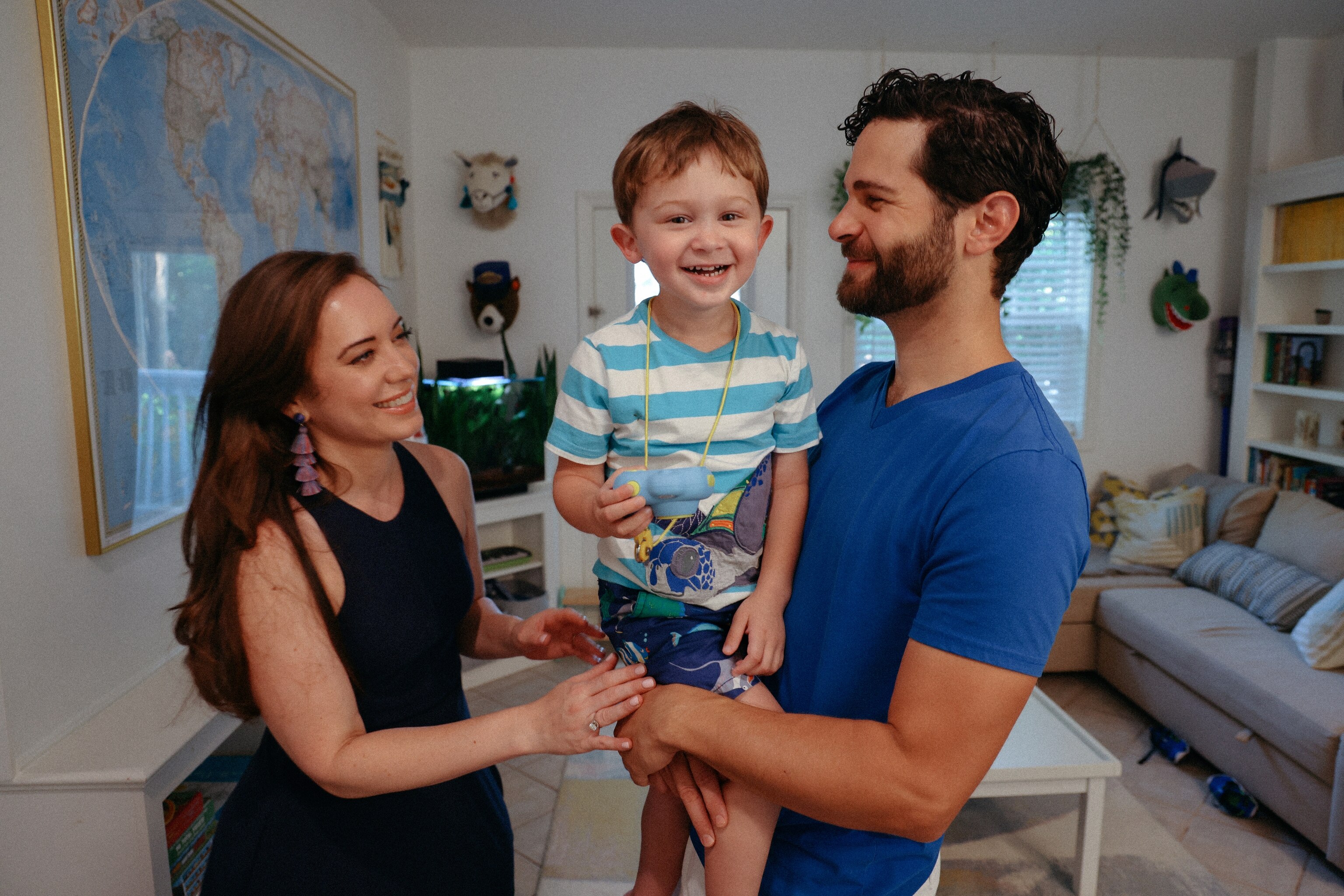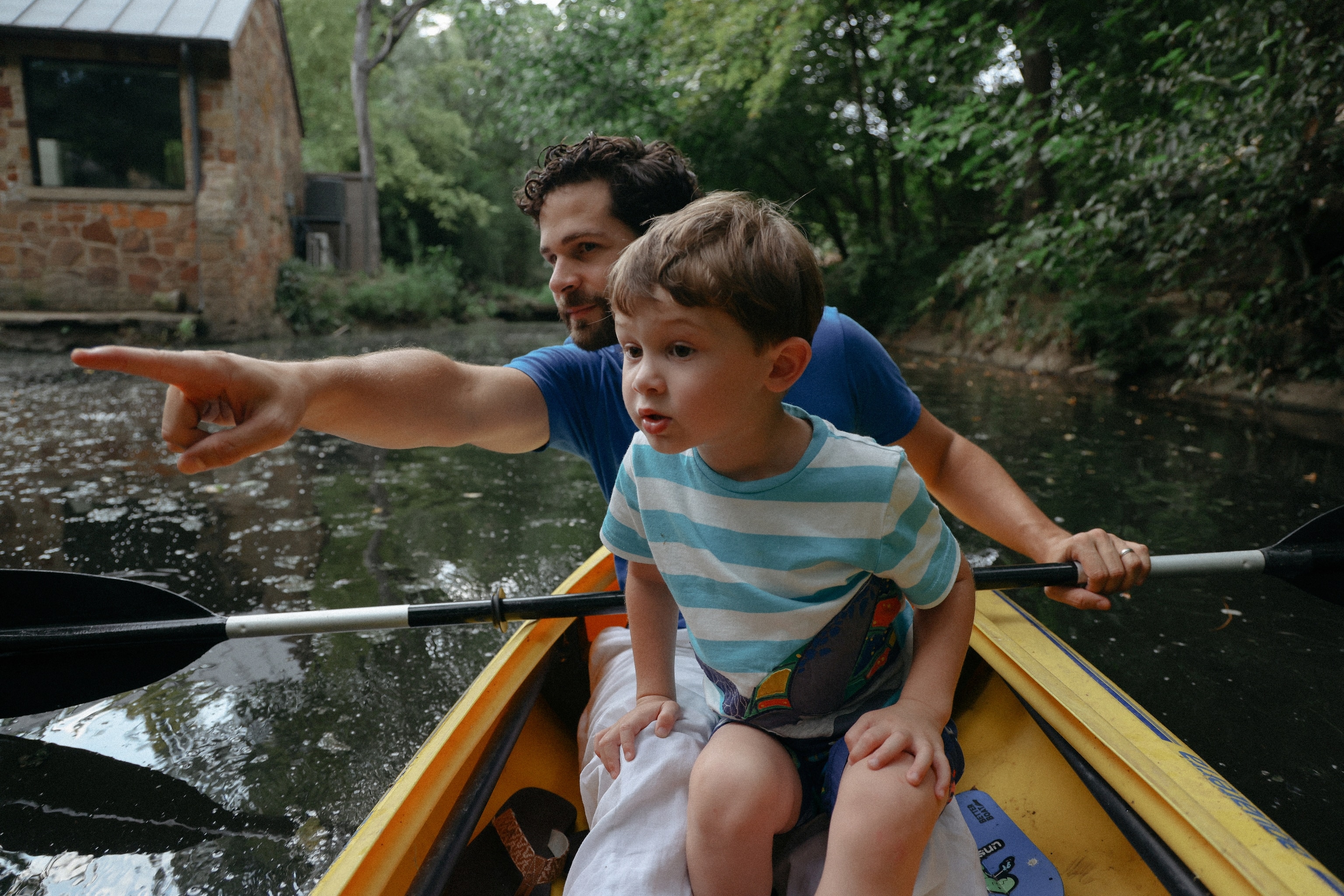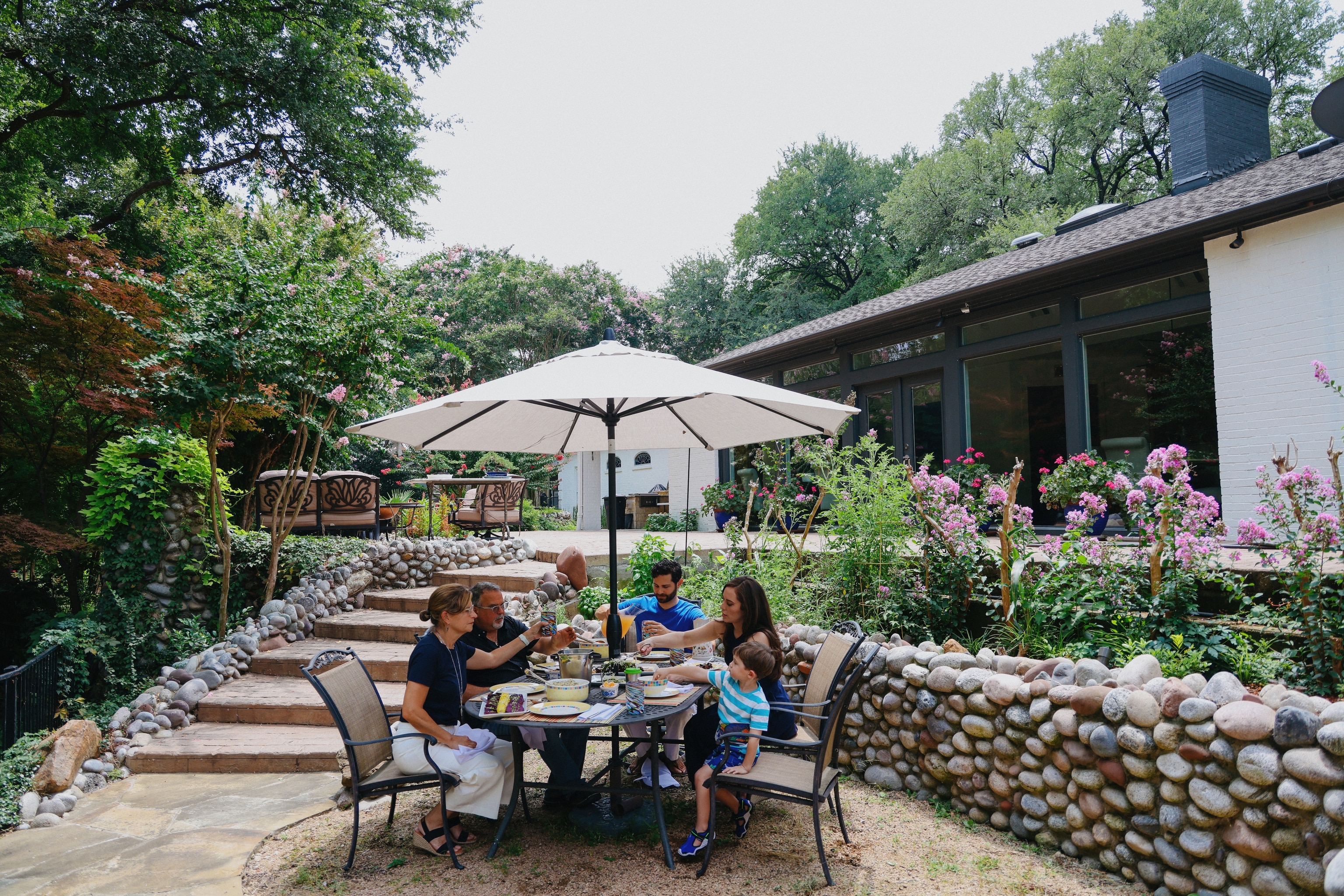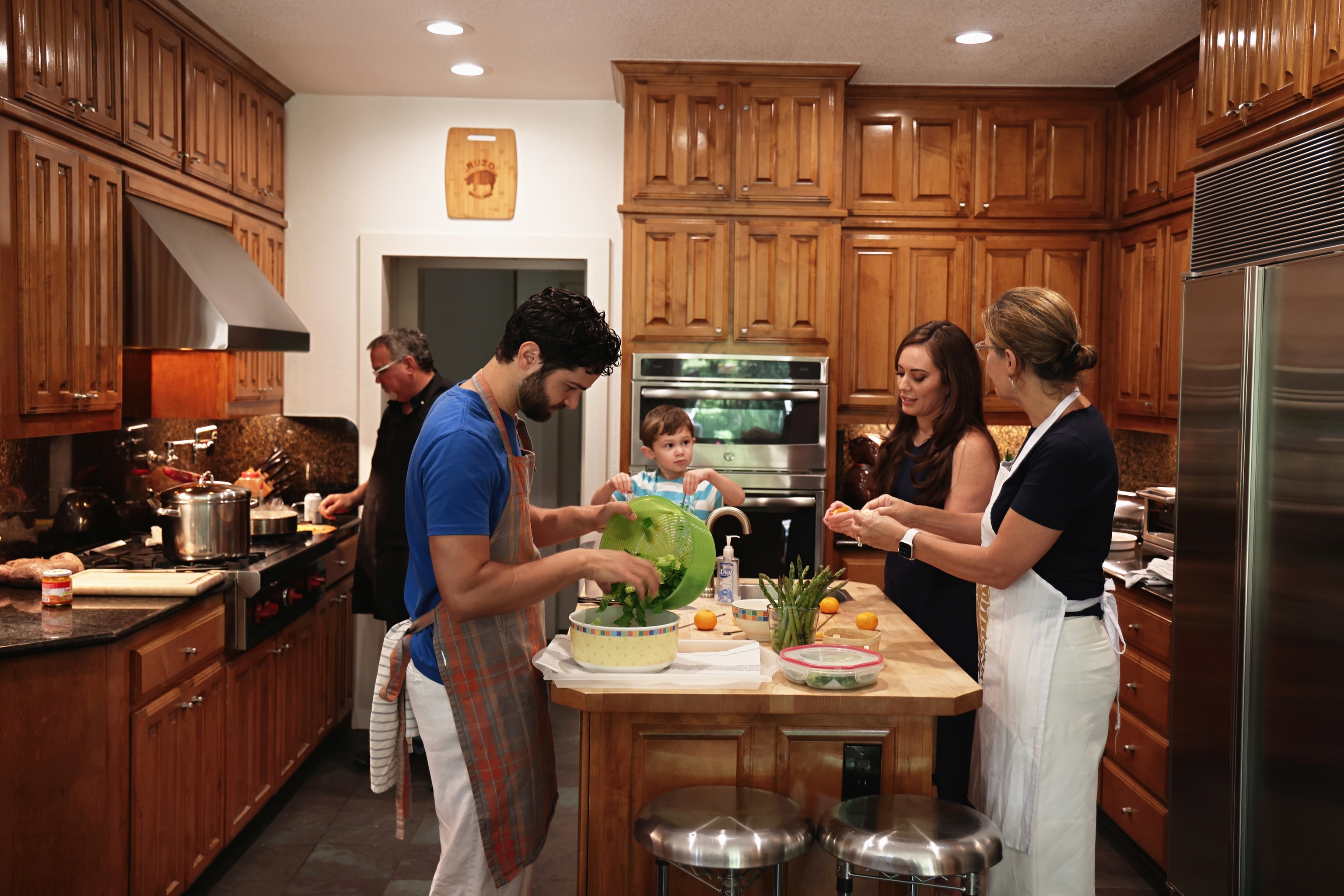Coming together to weather the storm
When the pandemic upended his family’s life, a geoscientist and his family rediscovered the rewards of multigenerational living.
What is home? For geoscientist and National Geographic Explorer Andrés Ruzo, the answer to that big question has always been a big place: Earth. “If we don’t take care of home, we’re in bad shape,” says Ruzo, a passionate conservationist, educator, and global citizen who grew up between Peru, Nicaragua, and the United States.
(Seeking a safe haven to grow a family)
Through his work, which focuses on the Amazon tropical region, Ruzo researches and champions sustainable solutions to protect our home planet. But, when the pandemic hit, Ruzo was faced with a different sort of “home” challenge, one that required a fast, smart solution for his family. At the time, Ruzo, his wife Sofia, and their young son Silvano were living in Miami, Florida, the U.S. gateway to South America and the Caribbean. The location was convenient for Ruzo since his research requires frequent travel to Peru.

“Things were great in Miami,” recalls Ruzo. “We had everything sorted out: my work, Sofia’s work, childcare, the school our son was going to go to… Then the pandemic hits and everything changes.”
Suddenly, being in Miami didn’t make sense anymore. Ruzo’s father, who was considered high-risk for COVID19 due to heart health issues, mother, and several members of his close, extended family live in Dallas, Texas. Instead of being isolated in a three-person bubble in Miami, Ruzo knew he and his little family had to find a way home to Dallas to help his parents.
His parents agreed. They eagerly welcomed Andrés, Sofia, and Silvano back to Dallas, and offered to let them live rent-free in a stand-alone bungalow suite formerly occupied by Andrés’ grandmother. Moving to Dallas solved some pressing practical problems, such as childcare and ensuring his parents stayed safe, but more importantly, says Ruzo, it was “the natural thing to do.” He explains, “We did not evolve as human beings to be alone. It is human instinct to come together.”

While they didn’t realize it at the time, the Ruzos were part of an upward trend in multigenerational households, which began before the pandemic but rose dramatically as the lockdowns began. In the early months of the pandemic, job losses, the switch to remote learning at colleges and universities, and other factors caused record numbers of young adults to move in with one or both parents. According to an analysis from the Pew Research Center, some 52 percent of 18-to-29 year-olds in the U.S. live with their parents. That’s more than at any time since the Great Depression.
Unlike some other pandemic housing trends that are expected to slow or reverse moving forward, research indicates that multigenerational living will continue to influence home building and home-buying decisions for certain segments of the U.S. population, says Noerena Limon, Executive Vice President of Public Policy and Industry Relations at the National Association of Hispanic Real Estate Professionals (NAHREP).
“The Latino and the Asian American community are the most likely to live in a multigenerational household,” says Limon. As evidence, she points to a recent National Association of Homebuilders survey in which 53 percent of Latino respondents said that being able to house a multigenerational was “incredibly important” when searching for a home. “That’s compared to only 35 percent of the non-Hispanic white population,” she adds.


Although he hadn’t planned to move his family back to Dallas before the pandemic, Ruzo says he is grateful that his son will be able to grow up surrounded by his grandparents, aunts and uncles, and cousins. “I grew up in a large, multigenerational family home,” Ruzo says, adding that he is the twelfth of forty-four first cousins. “We all kind of grew up like brothers and sisters and it was a lot of fun. That’s something that is very Latin American and something I want for Silvano.”
He also wants more rooms for his family to spread out. The bungalow was the perfect size for his grandmother, but it’s a tight fit for two working parents and an active preschooler.
Being in a small space with a three-year-old during a pandemic wasn’t easy. Sofia and I both wanted to protect our careers and we both wanted to spend time with Silvano, so we split up the time to get work and childcare in. Everything has become a multipurpose room.
Andrés Ruzo, National Geographic Explorer
The “most multipurpose room of all the multipurpose rooms,” says Ruzo, is a living room that does triple duty as a gathering space, playroom, and classroom. But, by far, the most creative reimagining of a space was the bathroom, which doubled as Ruzo’s lab. Since pandemic travel restrictions prevented him from traveling to the Amazon to conduct research, he created his own slice of the Amazon with tropical plants and Amazonia frogs purchased at a local pet store.
“The research had to continue,” he explains. “I want to look ultimately at the frogs’ skin secretions; any weird chemicals they might be producing that can hopefully bring value to the jungles and make the Amazon worth more standing up than chopped up into boards.”

Now that travel is resuming, Ruzo can return to Peru to conduct his research. Yet, while his world is opening up, the space in the bungalow isn't getting bigger. Ruzo says he’d love to purchase a place close to his parents, but the red-hot housing market is making that impossible. “When we moved, the plan was to stay here until I knew Sofia, Silvano, and I were settled in and safe, and that my parents were OK,” he says. “Then we were going to look to buy our own house nearby. But, holy cow, did the market have other plans.”
Since the early months of the pandemic, historically low-interest rates and a shortage of homes for sale have been sparking bidding wars and all-cash offers and driving up home prices across the U.S. According to U.S. Census Bureau data, the median sales price of new houses sold in June 2021 was $361,800, an all-time high.
The shortage of affordable housing is putting homeownership out of reach for many first-time homebuyers and young families, such as the Ruzos. Solving the problem will take creativity and a collective effort, says Noerena Limon of the NAHREP.
“We have the wherewithal and the resources and intellect in this country if we all put our heads together we can find a solution,” Limon says, “but we have to think of the greater good. The only way we are going to address this issue is if we create communities where we build multifamily zoning. Where we’re able to build townhomes and rethink the way we use land.”
Whether multifamily or single-family, Ruzo is hopeful that his family’s future will include a home of their own. While he and Sofia work toward that goal, they are grateful for the opportunity to spend time with his parents.
Apparently, the feeling is mutual. Says Ruzo’s mother, “We are very fortunate to see them and see them every day. Seeing Silvano grow is priceless.”